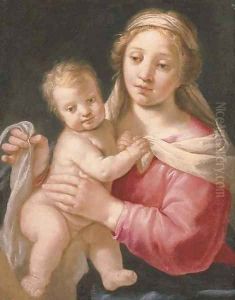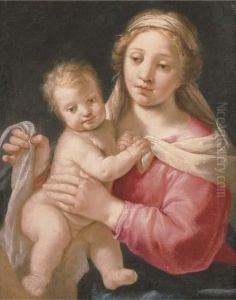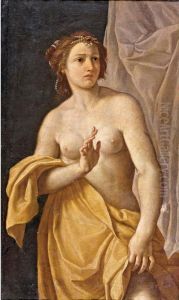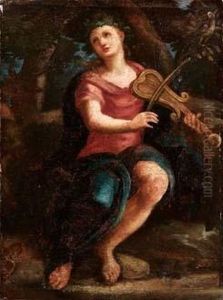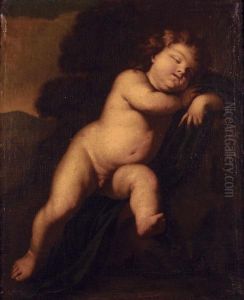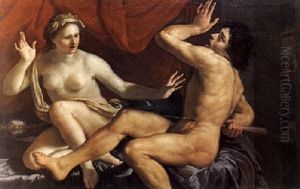Paolo Emilio Besenzi Paintings
Paolo Emilio Besenzi was an Italian artist, known primarily for his work in the Baroque period, born in 1621 in Reggio Emilia, Italy. Although his biography is not as widely chronicled as some of his contemporaries, Besenzi made a mark in the Italian art scene of the 17th century with his contributions to painting and architecture.
Besenzi showed an early interest and talent in the arts, and his initial training is believed to have been under the guidance of local painters in Reggio Emilia. He later traveled to Rome, which was the epicenter of Baroque art, to further his studies. The artistic environment of Rome during this period was vibrant and provided Besenzi with exposure to the works of prominent artists such as Gian Lorenzo Bernini and Francesco Borromini, whose influence can be seen in his approach to painting and design.
Throughout his career, Besenzi was involved in various important projects, including fresco decorations for churches and public buildings. His style was characterized by dynamic compositions, dramatic use of light and shadow, and a vivid sense of movement, all hallmarks of the Baroque aesthetic.
Unfortunately, Besenzi's life was cut short when he died in 1656 at the age of 35. Despite his premature death, Besenzi's artistic legacy continued through his works, which contributed to the richness of Baroque art in Italy. His paintings can be found in several Italian churches, and they continue to be studied and admired for their artistic value and contribution to the Baroque period.
The lack of extensive records about Besenzi's life and work has left many aspects of his biography shrouded in mystery. Nonetheless, he remains recognized as a skilled artist of his time, with a modest but significant footprint in the history of Italian Baroque art.
